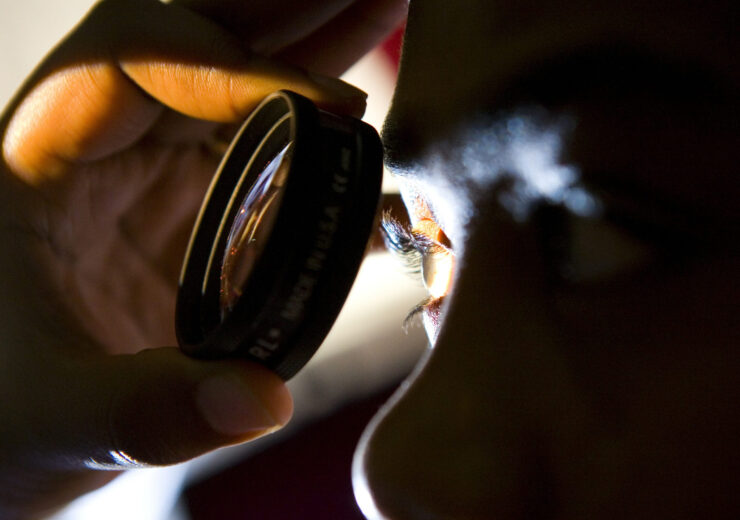New research from eye care nonprofit Orbis International is the first ever to use artificial intelligence to detect diabetic retinopathy in children in a low- or middle-income country

A close-up of a child being examined for diabetic retinopathy at an Orbis International partner hospital. (Credit: Geoff Oliver Bugbee)
A new study by eye care nonprofit Orbis International finds that artificial intelligence (AI) accurately detects diabetic retinopathy, a common complication of diabetes that can lead to blindness, in children and young adults. The peer-reviewed study, published in Clinical Medicine Insights: Endocrinology and Diabetes, shows that Cybersight AI, a component of Orbis’s telemedicine and e-learning platform, can be an effective tool to support medical staff, who are often overburdened with patient caseloads, to care for children with diabetes, especially in low-resource settings with limited numbers of trained health care professionals.
“To date, AI has been studied to detect diabetic retinopathy in adults,” said Nicolas Jaccard, Principal Architect, Telehealth & Program Technology, Orbis International. “These studies have shown that AI is highly effective and accurate, but almost none have been tested on children. Adults and children with diabetes both require regular eye screenings to detect diabetic retinopathy and keep the condition from progressing, which can lead to irreversible vision loss or blindness. However, trained eye care professionals cannot meet the growing demand for diabetic retinopathy screening as the prevalence of diabetes continues to rise. A tool like Cybersight AI can help to meet this burden, especially for children and young adults who have been shown are less likely to seek out routine eye screenings.”
The study screened more than 1,300 children and young adults between the ages of 3 and 26 diagnosed with diabetes, and was carried out at the Dhaka BIRDEM-2 hospital in Bangladesh. Each patient had images of their retinas (the back of the eye), taken on a fundus camera at the hospital, evaluated by Cybersight AI and by a fully qualified optometrist certified to grade for diabetic retinopathy. Results showed that Cybersight AI accurately detected any signs of diabetic retinopathy among children and young adults, despite the algorithms having been trained on adults.
“Diabetes is on the rise for young people in Bangladesh,” said Dr. Munir Ahmed, Country Director, Orbis Bangladesh. “Type II diabetes nearly tripled in people under 20 years of age in just seven years, from 2011 to 2018. Adolescents with type II diabetes have a higher risk of developing diabetic retinopathy, compared to adults. This is very concerning in Bangladesh where children and young adults do not have access to the regular diabetic retinopathy screening required to manage the disease and prevent future vision loss or blindness.”
Diabetic retinopathy is the leading cause of vision loss among working-age people around the world. Access to diabetic retinopathy screening is critical to preventing visual impairment as most patients do not realize they have the eye disease until their vision is already affected irreversibly. Bangladesh and other low-resource settings lack the infrastructure and trained personnel to implement the screenings effectively. In Bangladesh, there are only 6.2 ophthalmologists per 1 million people. This is not nearly enough to meet the need.
This study comes on the heels of others published by Orbis International on the benefits of AI in eye care in low- and middle-income countries. Orbis recently published back-to-back studies from Rwanda, including the first to show that use of AI for diabetic retinopathy could significantly boost referral uptake and included results that are broadly applicable across other settings for AI-supported diabetic retinopathy screenings.
Source: Company Press Release
